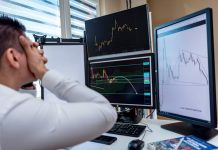The Forex market is a massive, complex ecosystem where various participants—each with their own goals and motives—interact to create the price movements we see on our charts every day. If you want to truly master trading, it’s essential to understand who the key players are, why they’re in the market, and how their actions impact price trends.
Who Are the Market Participants?
Let’s break it down. In the Forex market, there are several types of players, each with a different role and motivation. Understanding these participants gives you insight into how the market moves and why it behaves the way it does. Here are the three major groups:
1. Retail Traders
That’s most of us. As retail traders, we’re individuals trading from our computers, trying to profit from price fluctuations. The retail crowd typically has smaller capital compared to other players, and our motivations can vary from simply trying to supplement our income to making trading a full-time career.
- Motivation: Retail traders often focus on short- to medium-term profits, using technical analysis and price action to enter and exit trades.
- Impact: While we contribute to daily price movements, retail traders generally don’t have enough capital to move the market on their own. But when retail sentiment aligns, it can create noticeable trends, especially in volatile markets.
2. Institutional Investors
This group includes banks, hedge funds, pension funds, and big financial institutions. They trade huge volumes and often hold positions for the long term, with strategies based on in-depth fundamental analysis. Their capital can move markets significantly.
- Motivation: Institutional investors focus on long-term returns and use their deep resources to analyze macroeconomic factors like interest rates, inflation, and geopolitical events. Their goal is often wealth preservation or growth for their clients, which means they’re less concerned with short-term price fluctuations.
- Impact: When institutions make moves, they create large trends. For example, when a hedge fund shifts billions into or out of a currency, it can cause a major price swing.
3. Central Banks
These are the most influential players in the Forex market. Central banks control a country’s monetary policy, including interest rates and the money supply. Their decisions are closely watched by every other participant because they can change the course of entire economies.
- Motivation: Central banks aren’t in the market to profit—they’re here to maintain economic stability. They intervene to control inflation, manage exchange rates, and ensure financial stability. When central banks raise or lower interest rates, it sends shockwaves through the market.
- Impact: A central bank’s decisions can create long-term trends in the Forex market. For instance, if the U.S. Federal Reserve announces a hike in interest rates, the value of the U.S. dollar might skyrocket as investors seek better returns.
How Their Motives Shape Market Trends
Now that we know who the players are, let’s explore why they matter. Each of these participants enters the market with different goals, and these goals influence price movements in different ways.
Retail Traders: Chasing Profits
Retail traders are often driven by quick gains. Whether it’s day trading, swing trading, or scalping, the retail crowd is looking for those small price moves to make a profit. When retail traders move in the same direction, it can lead to short-term price spikes or drops. However, retail traders are often more vulnerable to emotional decisions—buying at tops and selling at bottoms.
- Example: During a market panic, retail traders may rush to sell, pushing prices lower, even though institutions may be quietly buying at those lower prices.
Institutional Investors: Big Money, Big Trends
When institutional players enter the market, they do so with massive capital, often looking to hold positions for months or even years. They’re not worried about short-term volatility; instead, they focus on the bigger picture. Their buying or selling power creates sustained trends that can last for weeks or even months.
- Example: If a large hedge fund expects the Euro to appreciate against the U.S. Dollar due to strong economic growth in the Eurozone, they may invest billions into the Euro, creating a long-term uptrend.
Central Banks: The Trendsetters
Central banks are the ultimate market movers. Their monetary policies—whether it’s raising interest rates, quantitative easing, or currency interventions—set the tone for the entire market. When a central bank signals that it’s tightening or loosening monetary policy, all other participants adjust their positions accordingly.
- Example: When the European Central Bank cuts interest rates to stimulate the economy, the Euro usually weakens because lower interest rates make it less attractive to investors.
Understanding These Dynamics
So, why does it matter to you as a trader? When you know who’s behind the price movements, you can make better decisions. Are the retail traders causing a short-term move, or is there a larger institutional trend at play? Is the central bank likely to intervene, or are they staying neutral?
Key Takeaways for Traders:
- Follow the Big Money: Retail traders might move the needle in the short term, but it’s the institutional investors and central banks that create the lasting trends. Keep an eye on their actions.
- Stay Informed on Central Bank Policies: Central bank announcements can make or break a trade. Always be aware of key events like interest rate decisions, as they have a massive impact on the market.
- Don’t Get Swayed by Retail FOMO: Retail sentiment can create quick moves, but don’t let FOMO (fear of missing out) pull you into a trade that doesn’t align with your strategy. Stick to the bigger picture.
Conclusion
Understanding the different market participants and their motivations is essential to becoming a successful trader. Once you grasp how these players interact, you can better predict market movements and position yourself to profit. It’s not just about trading—it’s about understanding who is moving the market and why.
What are your thoughts on market dynamics? Drop your comments below, and let’s dive deeper into this fascinating topic! 👇
Discover more from 9jacashflow.com
Subscribe to get the latest posts sent to your email.





